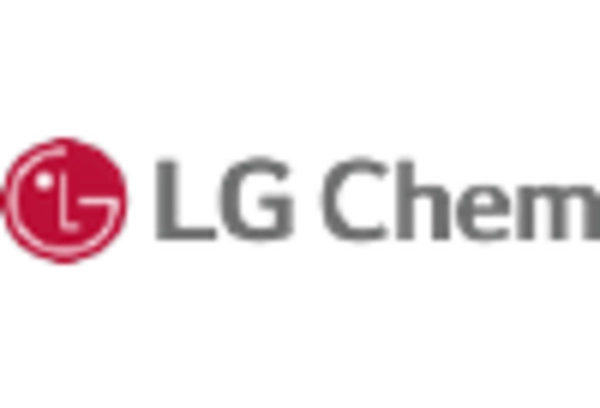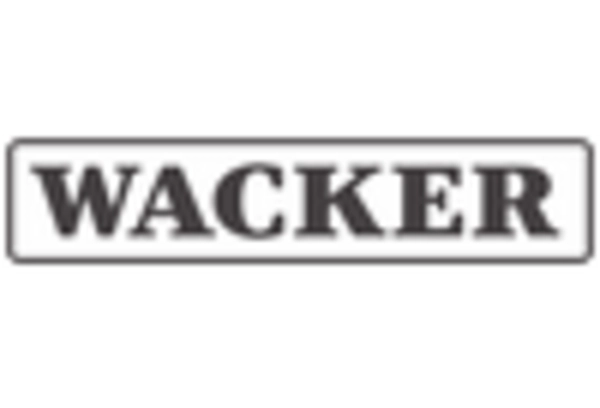Innovations in Polymer Chemistry
Innovations in polymer chemistry are significantly influencing the HEA HPA HEMA HPMA Market. Advances in synthesis techniques and the development of novel polymerization methods are enabling the creation of materials with tailored properties. For instance, the introduction of controlled radical polymerization has allowed for the design of polymers with specific functionalities, enhancing their applicability in various sectors. Market data suggests that the polymer chemistry sector is experiencing a compound annual growth rate of approximately 5% through 2025. This growth is indicative of the increasing investment in research and development, which is likely to yield new products and applications in the HEA HPA HEMA HPMA Market, thereby fostering competitive advantages for manufacturers.
Rising Demand for Biocompatible Materials
The increasing demand for biocompatible materials in the HEA HPA HEMA HPMA Market is driven by the growing applications in medical devices and implants. As healthcare providers seek materials that minimize adverse reactions, the market for HEA, HPA, HEMA, and HPMA is expected to expand. Recent data indicates that the biocompatible polymer market is projected to reach USD 20 billion by 2026, suggesting a robust growth trajectory. This trend is likely to enhance the adoption of these materials in various medical applications, thereby propelling the HEA HPA HEMA HPMA Market forward. Furthermore, the emphasis on patient safety and comfort is likely to drive innovation in material formulations, leading to enhanced product offerings.
Growing Awareness of Personalized Medicine
The growing awareness of personalized medicine is influencing the HEA HPA HEMA HPMA Market. As healthcare shifts towards tailored treatment approaches, the demand for materials that can support personalized therapies is increasing. HEA, HPA, HEMA, and HPMA are being explored for their potential in creating customized drug delivery systems and biomaterials that cater to individual patient needs. Market analysis indicates that the personalized medicine market is projected to reach USD 2 trillion by 2025, suggesting a significant opportunity for materials that can facilitate these advancements. This trend is likely to drive innovation and investment in the HEA HPA HEMA HPMA Market, as stakeholders seek to develop solutions that align with the principles of personalized healthcare.
Expanding Applications in Drug Delivery Systems
The expanding applications of HEA, HPA, HEMA, and HPMA in drug delivery systems are emerging as a key driver for the HEA HPA HEMA HPMA Market. These materials are being utilized to develop advanced drug delivery mechanisms that enhance therapeutic efficacy and patient compliance. The market for drug delivery systems is projected to reach USD 300 billion by 2025, indicating a substantial opportunity for materials that can improve drug solubility and bioavailability. As pharmaceutical companies increasingly seek innovative solutions to optimize drug delivery, the demand for HEA, HPA, HEMA, and HPMA is likely to rise, thereby propelling the growth of the HEA HPA HEMA HPMA Market.
Increased Investment in Healthcare Infrastructure
Increased investment in healthcare infrastructure is a significant driver for the HEA HPA HEMA HPMA Market. Governments and private entities are allocating substantial resources to enhance healthcare facilities and services, which in turn drives the demand for advanced materials in medical applications. Recent reports indicate that healthcare spending is expected to grow by 7% annually, leading to a heightened need for innovative materials in medical devices and equipment. This trend is likely to create a favorable environment for the HEA HPA HEMA HPMA Market, as manufacturers strive to meet the evolving needs of healthcare providers and patients alike.

















Leave a Comment